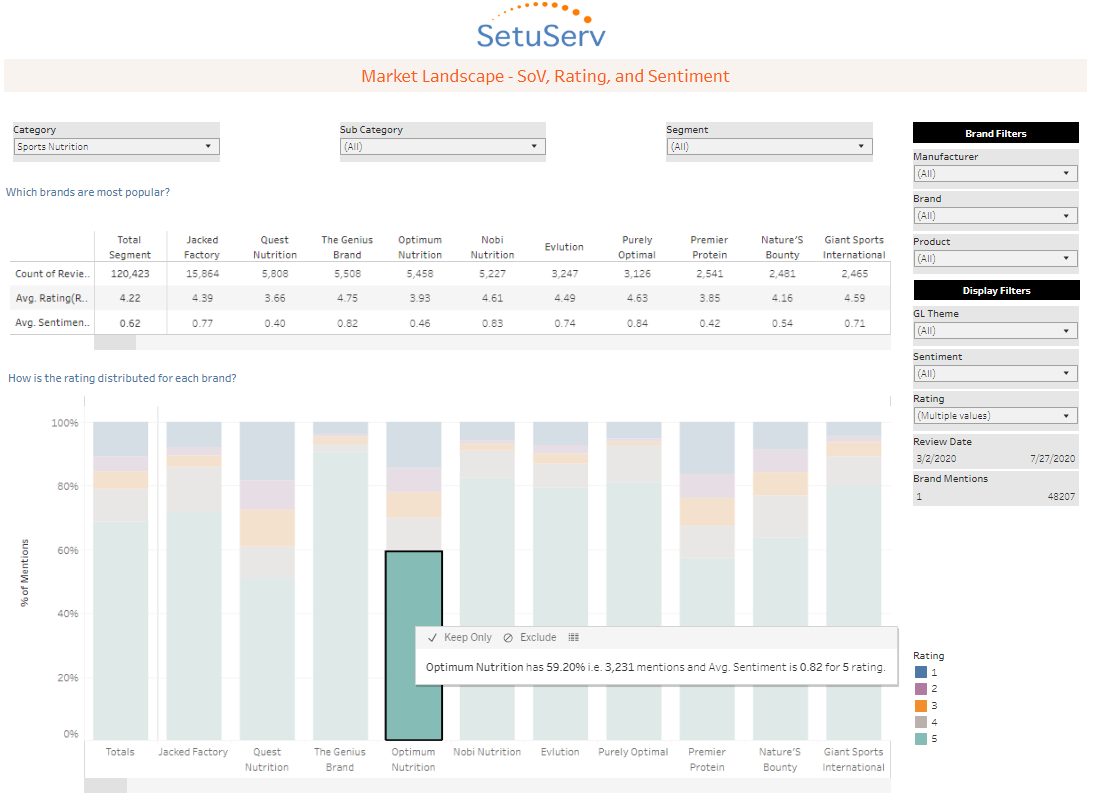Market landscape involves the broad mapping of various players in a specific industry, segment or geography with characteristics like business health, drawbacks, and opportunities. Market landscape analysis helps to understand competition and create broad business strategies using specific business insights.
Why and when to use market landscape analysis?
Market landscape analysis gives a wide canvas for brands, so the boundaries have to be defined and purpose-driven. For example, it involves the mapping of existing players in a segment, competitor’s strengths and weaknesses, demographics targeted, etc. The availability of tons of data helps to understand where a brand stands vis-à-vis competitors.
With such an analysis, making data-driven decisions that are in sync with business objectives and emerging trends becomes easy. It allows organizations to build holistic go-to-market strategies or leverage gaps left unexplored by competitors.
The process of mapping various characteristics is useful when considering significant expansion or planning for diversification from core business. Market landscape analysis helps in building a superior strategic plan apart from playing a key part in setting up a collective impact collaboration.
The traditional approach to market landscape analysis
The traditional approach to market landscape analysis involves a combination of qualitative and quantitative techniques to understand the size of the market, needs of the consumer, and competition in the market.
Qualitative research involves ethnographic study, focus group discussions, in-depth interviews, etc whereas, quantitative research involves survey and statistical analysis of secondary data. Such a research project is considered to be time-consuming and the sample size plays an important role in defining the accuracy of resultant insights.
The time consumed by similar research projects is very high thus, the chances of missing newer trends with the rapidly changing technological landscape might arise. To mitigate such unforeseen risks, we at Setuserv have created a platform that helps in being dynamic with your market landscape analysis, the platform is called VOCIS. It uses customized machine learning algorithms as per the requirement of a brand to ensure actionable insights are mined.
VOCIS Platform: Dynamic approach to market landscape analysis
The market landscape module of the VOCIS platform augments the traditional approach of analyzing data with a specialized machine learning algorithm. The algorithm helps analyze data at a granular level and gives easy to understand information about:
- Share of Voice
- Ratings of specific brands and their products
- Customer sentiments
- Trending Brands

The above diagram depicts the data from the health, household, and wellness segment.
Advantages of the VOCIS platform
VOCIS platform is robust and allows to capture accurate insights by mining data about new entrants without dislodging existing information. Gathering similar data helps in effective competitive bench-marking.
The platform’s true potential is in the ability to take more structures of data, this helps it to be scalable. i.e. The brands have their own proprietary data can interlace with existing data being mined by the platform thus, creating highly customized and brand-specific solutions.
By combining the specificity of human intelligence which understands the emotional aspects of consumers with data mined from the abundant unstructured data using AI algorithms you have a strategy that is validated using data. This approach helps increase the confidence in actions taken as the insights of the human brain are validated through data from artificial intelligence.
